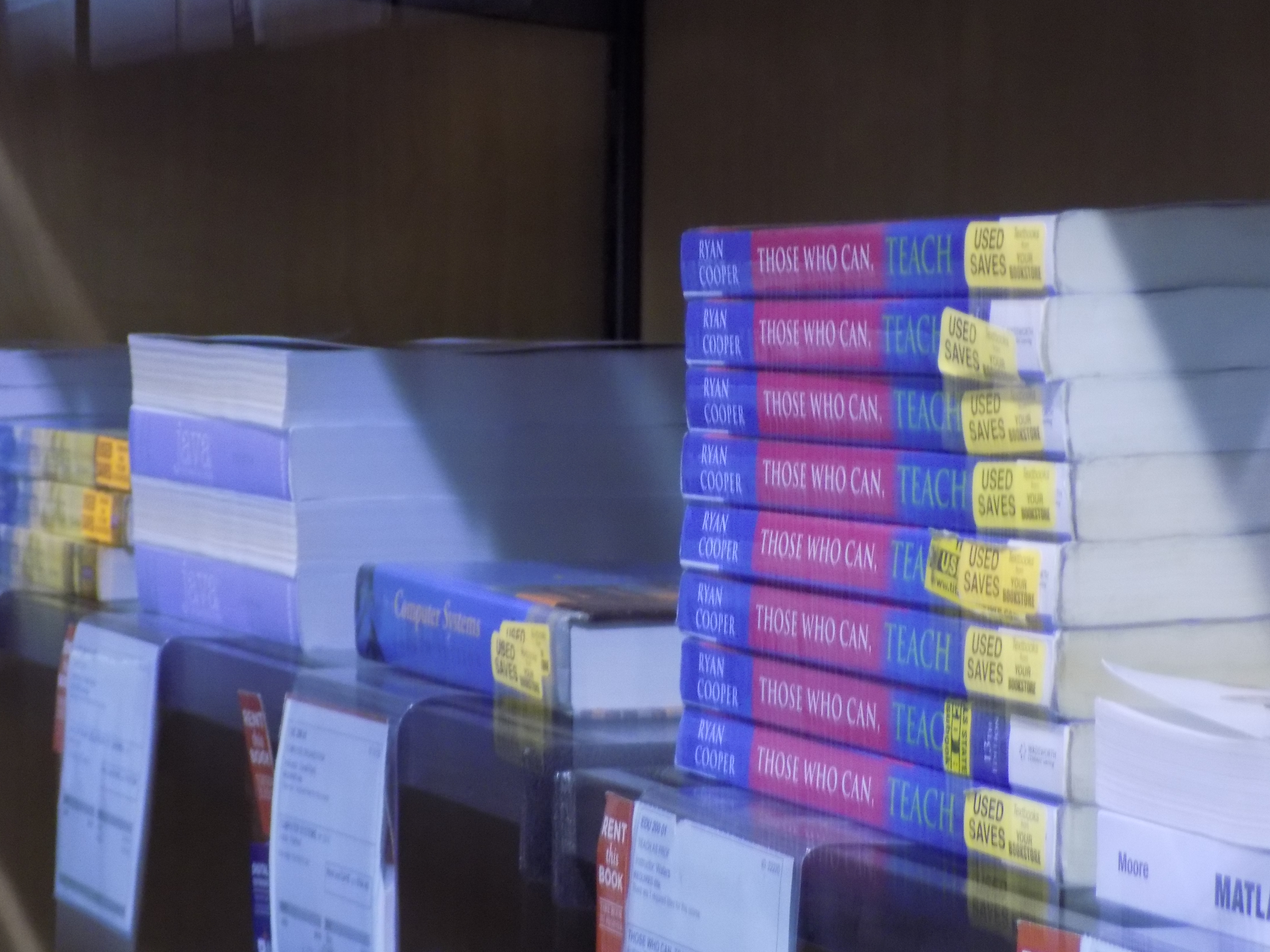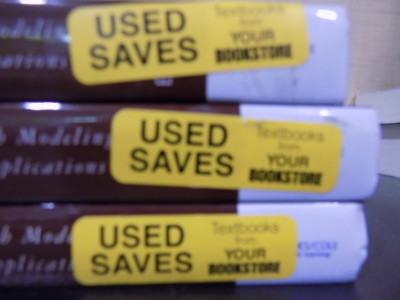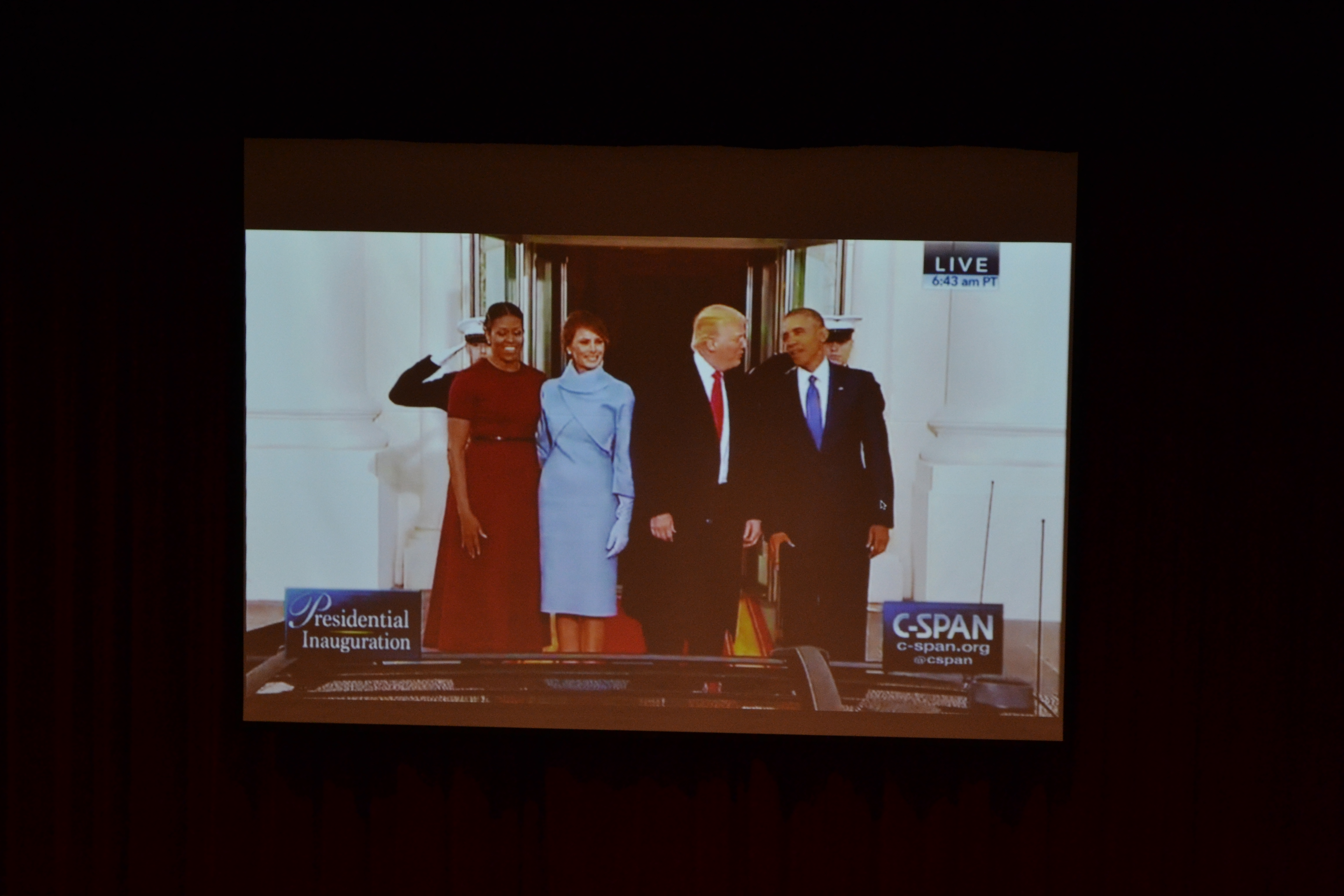
The Bank-Breaking Cost of Textbooks

“Three hundred forty-eight dollars and fifty cents. I know [it] exactly,” said first-year student Talur Martin. The cost of her textbooks this semester is indelibly printed on her mind.
“I spent only about 45 dollars because I didn’t buy one of the textbooks I was supposed to get,” said fourth-semester student Graham Farnsworth. He estimates that he would have spent about $145 otherwise. Mathew Trimm used to spend between $400 and $500 each semester. After changing majors he paid around $140, which, in comparison to other semesters, is “really cheap, like extremely cheap” for him.
PVCC’s in-state tuition per credit hour is $135 ($148.15 with fees). How can a textbook cost as much as a college credit?
Dr. John Donnelly, vice president for instruction and student services, calls the textbook publishing industry a near “monopoly” in which “students are essentially hostages” to exorbitant textbook costs. “I think [the costs] are ridiculous,” he said.
PVCC is in the process of helping students reduce textbook expenses and is “all over the spectrum” in the methods it employs, Donnelly said. In addition to offering used and rental textbooks at the bookstore, some professors are using “brief editions,” a shorter version of the original text for only a fraction of the cost. PVCC’s Textbook and Educational Resources Adoption Policy strongly encourages faculty to seek out lower-cost materials of comparable quality, including previous editions of textbooks whenever possible, so that students can purchase or rent used books from year to year instead of paying more for the newest editions.
Online resources have also played a large role in reducing textbook expenditures and have the potential to revolutionize education and the publishing industry. “[Online educational resources] is the newest, transformative thing happening in higher education,” Donnelly said. He believes it will open post-secondary education
to students who currently cannot afford it and “transform how students will pay” for educational resources.
Online content exists in different forms, from public-domain Online Education Resources (OER) to e-books to reputable Web pages. As more classes transition to using online materials, faculty find themselves drawing from any number of these sources.
“We try where we can to make classes textbook-free,” said Instructor of Information Technology Mike Ferero. Because many technology resources are available online, technology courses in particular have made substantial strides toward eliminating textbook costs. ITE 119, an Information Literacy course, now uses only online materials, as does ITE 120, Principles of Information Systems. ITN 170, Linux System Administration, uses online documentation in place of textbooks, and network security-related classes use e-books and online readings.
PVCC is also participating in the Zx23 Project. According to the project’s webpage, it is a one-year grant for participating VCCS colleges, that is “used to support and train faculty and staff at sixteen Virginia community colleges to build Z -Degrees at their institutions.” A Z-Degree is “a set of courses in a specific program area that allows a student to earn a college credential, such as an associate degree, with zero textbook costs.” The project utilizes Open Educational Resources, which are free and openly licensed, to meet this goal.
Crystal Newell, coordinator of library services, is a key member of the Zx23 program at PVCC. She helps participating faculty evaluate resources and navigate the complicated terrain of copyright and licensing details. Overall, Newell estimates that 11 or 12 courses have now eliminated textbooks, which amounts to significant savings for students. The VCCS as a whole has saved dollar amounts “in the millions” through participation in the program, she estimates.
Spring 2016 is the pilot semester for the Zx23 Project, so the program has accumulated little formal feedback; however, many faculty and students have created or experienced a textbook- free course and can speak to the pros and cons of the shift.
Ferero names “quality control” as one of the main hurdles to assembling a curriculum solely from online resources. However, in some cases, he found that online resources have improved the course material. For some classes, “we’ve developed or found better exercises…than what was in the textbook to begin with,” he said. For instance, sometimes students begin to read more primary sources, rather than a secondary-source textbook.
Brennan Tanner, a fine arts major, noticed this trend in his History of Western Civilization class. “Readings can be from a lot of different sources,” he said. “We read excerpts from historical sources, plays from the period we’re reading…last week was the letters by Plutarch.”
However, going digital has some disadvantages. Ferero acknowledged that because online materials are often in a variety of locations, “you do have to bounce around… there’s no one place for students to go to read [the material].” Donnelly, too, has spoken with students who voice similar concerns. “Some students say they want to have a real book in their hands,” he said.
And some online resources might not be entirely user-friendly. Talur Martin describes her online math text: “It sucks. It’s really hard to find what you need, and you have to type in the page number every time you want to turn the page.” The web-assign math courses are not a part of the OER movement, since they do still have associated costs. However, they demonstrate the conflict between a desire to incorporate technology in the classroom with the practical realities of a user interface that has not always caught up.

Some disciplines are less suited to online material. More creative or modern content makes public-domain resources more challenging to find, said Newell. Subjects such as literature usually have to rely on other cost-reducing strategies, such as shrinking the number of required textbooks and providing used or rental copies for students.
Ferero, Newell and Donnelly all noted the time investment required by faculty in order to move class resources to online material. “The time and effort involved on individual faculty is very large,” said Newell. Donnelly, a strong advocate of online resources, admits that his History 101 and 102 classes still use a textbook in part because of expediency. It takes time to switch over to digital content, he explained. Ultimately, though, “the benefits to students far outweigh the problems or challenges,” said Donnelly.
The effects for students and colleges have become sufficiently dramatic that the textbook publishing industry has begun to take notice. “Publishers are responding as a result [of the changes], and I hope there will be some compromises made as a result,” said Newell. “It’s huge,” said Donnelly, speaking of the impact on the industry. “[Publishers] are definitely paying attention.” Some have begun to consolidate high- quality OER materials and make them available for a one-time, lower cost, he said.
Ultimately, PVCC faculty and administrators recognize textbook costs as a barrier to student achievement, and VCCS names textbook costs as an impediment to its six-year plan to triple the number of credentials that students earn. College tuitions are increasing, textbook costs are increasing, but wages are not, explained Newell. “This is not something we can ignore…we need to do something. And this is something we can do.”
“It’s 2016. It’s time,” she said.







